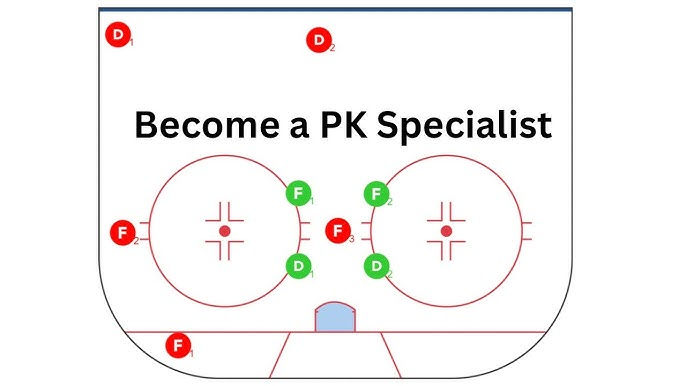The Quarterback Defenseman: How to Run a 1-3-1 Power Play Like a Pro
- Kevin Geist
- 17 minutes ago
- 3 min read
In today’s modern game, the 1-3-1 power play is the gold standard for puck

movement, shot generation, and creating width through the middle of the ice. At the center of it all sits the most important piece on the ice: the “QB” defenseman. Much like a quarterback in football, this player dictates pace, distributes the puck, reads pressure, and decides exactly when and where the attack unfolds.
But what exactly makes a QB defenseman effective in the 1-3-1? And what should young players focus on if they want to run the top of the umbrella like the elite D in the NHL? Let’s break it down.
1. The QB Is the Initiator of Every Look
The 1-3-1 begins with controlled possession at the top. The QB’s job is to get the puck settled, assess the penalty kill’s structure, and decide the first action. This usually means choosing between:
A touch pass to the half-wall
A quick set-up to the flank shooter
A low play to the bumper or net-front
A walk-the-line shot to create a rebound or tip
Nothing happens until the QB reads the box and starts the sequence.
2. Scanning and Pressure Reading
Great QB defensemen don’t stare at the puck—they scan constantly. They read:
Stick positions on both flank defenders
The aggressiveness of the PK’s top forward
Whether the bumper is available for a pop-pass
If the weak-side flank is creeping low for a one-timer
When the net-front player has inside body position
The best QBs can hold the puck that extra half-second and manipulate the PK forwards, pulling them out of lanes and opening dangerous seams.
3. Deception Is Everything
Elite power-play quarterbacks never telegraph passes. Their job is to freeze the penalty killers long enough to open seams for teammates to attack.
Key deceptive tools include:
Look-offs (looking right, passing left)
Weight shifts to fake a shot
Subtle toe drags to change lanes
Hip rotation to disguise distribution
Head and shoulder fakes to force the top PK forward to commit
That one deceptive movement often turns a dead play into a Grade-A chance.
4. Walking the Blue Line
One of the most underrated skills of the QB in a 1-3-1 is the ability to “walk the line.” A QB must be able to:
Move laterally with speed and balance
Change shooting angles
Open passing seams by forcing the top defender to chase
Turn blocked shots into clean shots or rebound opportunities
It’s not about skating pretty patterns—it’s about creating new angles that stress the PK’s shape.
5. Perfect Distribution Timing
The QB’s job is to deliver pucks to teammates at the right moment, not just in the right place. In the 1-3-1, timing determines everything:
Hit the flank shooter as the bumper crosses the middle
Send the low play right as the net-front gets inside leverage
Move the puck east-west as the PK rotates or overcommits
Set up the one-timer when the top PK forward is recovering
Great QBs create rhythm. Bad ones turn the PP static and predictable.
6. Shot Selection: Quality Over Quantity
A QB defenseman isn’t meant to bomb slap shots every shift. Their primary shooting goal is creating chaos:
Wristers with eyes
Low shots for tips
Rebounds for the net-front forward
Shots that force the PK to collapse
When the QB uses smart shot selection, the middle of the ice opens and the flanks become far more dangerous.
7. Accountability and Emotional Control
The QB touches the puck more than anyone else on the power play. That means:
They set the emotional tone
They control pace when things get hectic
They’re responsible when the PP looks disorganized
They must calm the group and get back into structure
A great quarterback doesn’t panic—and they don’t let their unit panic either.
8. Teaching Young Defensemen to Be QB-Ready
If you’re developing youth or high-school players to run a 1-3-1, focus on:
Puck-handling confidence under pressure
Vision drills (scanning for options every few seconds)
Deceptive shooting and passing mechanics
Edgework along the blue line
Decision-making reps in small-area games
Building trust with flank shooters
The position is less about being the biggest or having the hardest shot—and more about being calm, deceptive, and intelligent.
Final Word
A strong QB defenseman can transform a power play overnight. When the 1-3-1 has a steady, confident, deceptive quarterback at the top, it forces penalty killers to choose between two bad options: either pressure and get exposed, or sit back and get picked apart.
In a sport where special teams can determine games, a true PP quarterback is one of hockey’s most valuable assets.







